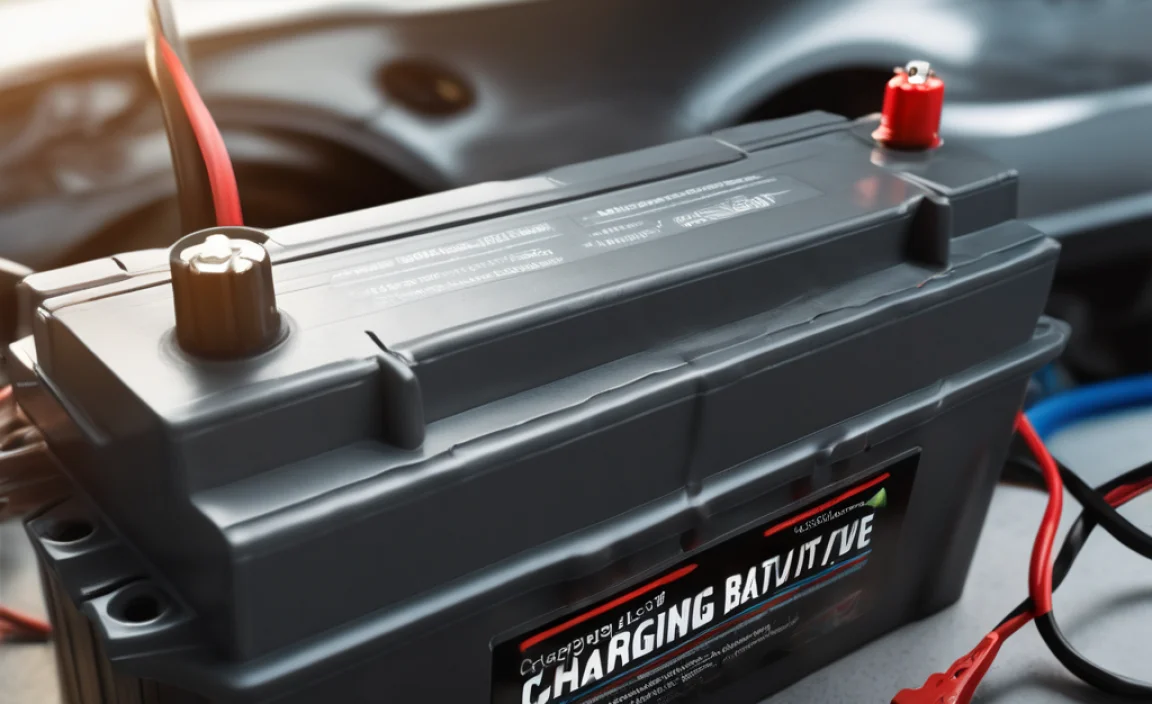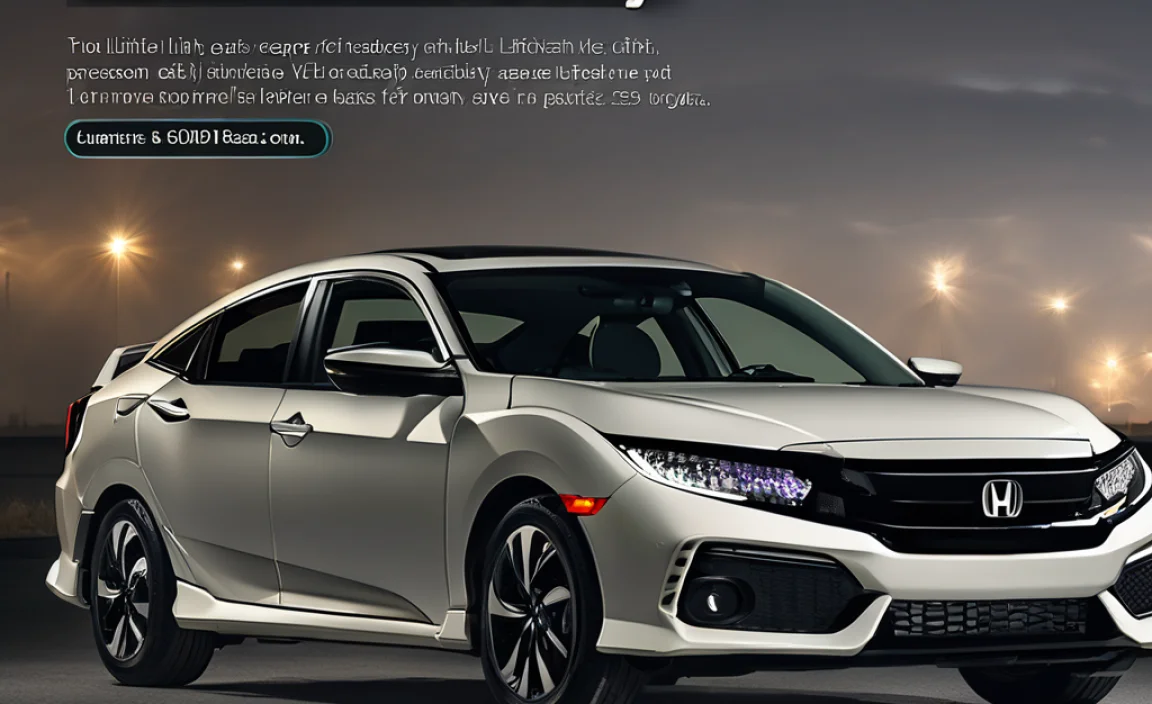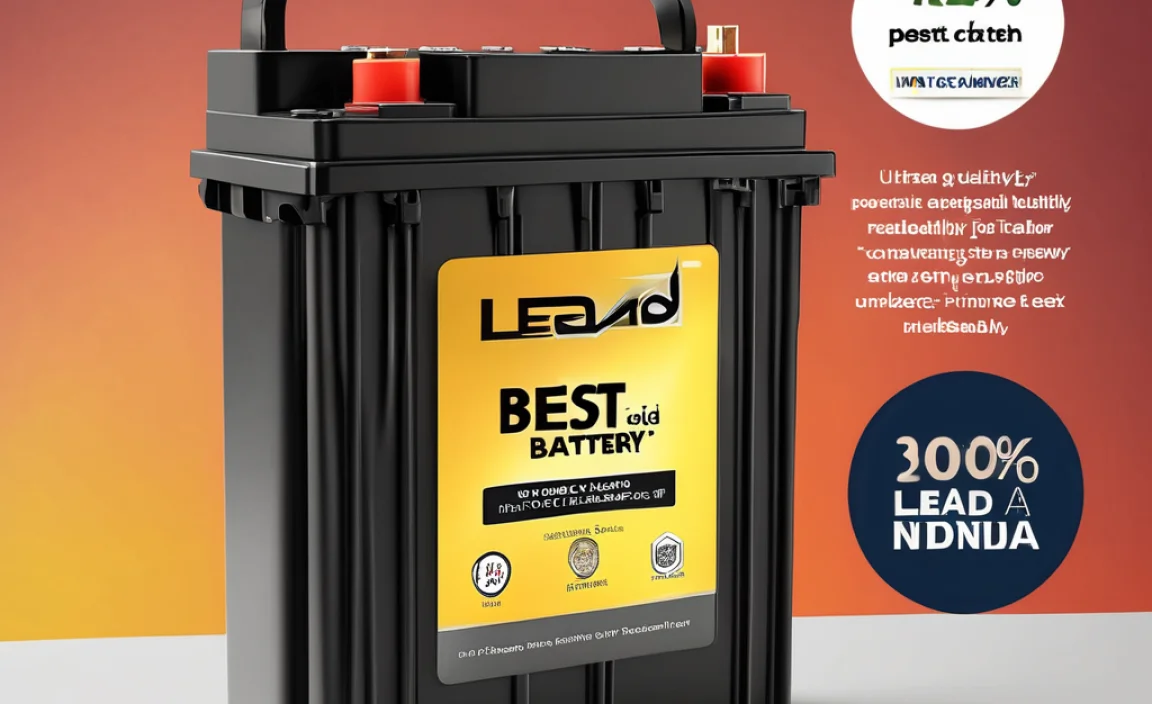Choosing the right Dewalt batteries is key to unlocking the full power and performance of your tools. This guide makes understanding battery types, capacities, and compatibility simple, ensuring you always have the essential power you need to get the job done right.
Hey there! Ever been in the middle of a project, just when you’re hitting your stride, and your Dewalt tool sputters to a halt? It’s frustrating, right? That’s usually a sign that your battery needs a little attention. For anyone with Dewalt cordless tools, the battery is the heart of the operation. Picking the right one can make a world of difference in how long you can work, how much power your tools have, and even how comfortable they feel in your hand.
But with so many options out there – different sizes, different numbers – it can feel a bit overwhelming. You might be wondering which battery is best for your drill, your saw, or that handy little oscillating tool. Don’t worry! Think of me as your friendly guide to all things Dewalt batteries. We’ll break it all down, nice and easy, so you can confidently choose the power that’s perfect for your needs.
In this guide, we’ll dive into everything you need to know about Dewalt batteries. We’ll cover the different types, what those confusing numbers mean, and how to keep them in top shape. Ready to power up your projects like a pro? Let’s get started!
Understanding Dewalt Battery Basics
When you look at Dewalt batteries, you’ll notice a few things that make them stand out. They’re generally tough, designed to handle job site conditions. But the most important differences come down to two main things: voltage and Amp-hours (Ah).
Voltage: The Power’s Strength
Think of voltage like the “oomph” your tool gets. Dewalt offers batteries in popular voltages like 12-volt (V Max), 18-volt (which is now part of the 20V MAX system in North America), and the powerful 60-volt MAX system. This number tells you how much electrical pressure the battery can deliver. Higher voltage generally means more power for tougher jobs.
- 12V MAX: Great for smaller, lighter tools like compact drills, drivers, and work lights. They are lightweight and easy to handle for detailed tasks.
- 20V MAX: This is the most common system and works with a huge range of tools, from drills and impact drivers to saws and sanders. It’s a good balance of power and portability.
- 60V MAX: For the heaviest-duty tasks. These batteries power tools that need serious muscle, like large miter saws, hefty leaf blowers, and powerful recipro-saws. They often use a special adapter or are built into larger tool designs.
Amp-hours (Ah): How Long It Lasts
Amp-hours tell you the battery’s capacity – essentially, how much energy it stores. A higher Ah number means the battery can run your tool for a longer time before needing a recharge. It’s like the size of the fuel tank.
You’ll see numbers like 1.5Ah, 2.0Ah, 3.0Ah, 4.0Ah, 5.0Ah, 6.0Ah, and even higher. A 4.0Ah battery will last about twice as long as a 2.0Ah battery under the same conditions.
Pro Tip: For longer runtimes, especially on demanding tools, opt for higher Ah batteries. If you prioritize a lighter tool, a lower Ah battery might be a better fit for shorter tasks.
Dewalt Battery Compatibility: Mixing and Matching Made Easy
One of Dewalt’s biggest strengths is its battery system. They’ve designed their batteries to be compatible across many of their tools, saving you money and hassle. But understanding this compatibility is crucial.
The 20V MAX / 18V FLEXVOLT Advantage
In North America, Dewalt uses a “20V MAX” system. In other regions, you might see it labeled as “18V.” It’s the same battery technology. This means a 20V MAX battery will power any Dewalt 20V MAX tool.
But here’s where it gets really cool: Dewalt’s FLEXVOLT batteries. These are special. A FLEXVOLT battery can electronically switch its voltage. This means:
- When you plug a FLEXVOLT battery into a 20V MAX tool, it acts like a powerful 20V MAX battery, often offering longer runtimes than standard 20V MAX batteries.
- When you plug that same FLEXVOLT battery into a 60V MAX tool, it automatically converts to deliver 60V of power, driving those high-performance tools.
This FLEXVOLT system is a game-changer, meaning one battery can power your entire 20V MAX and 60V MAX tool lineup. It’s a smart investment for serious DIYers and professionals.
Understanding XR, XR PLUS, and FLEXVOLT
You’ll see designations like XR and XR PLUS on Dewalt battery packs. These refer to the battery’s technology and performance level.
| Battery Type | Description | Key Features |
|---|---|---|
| XR (eXtreme Runtime) | Dewalt’s standard line of lithium-ion batteries. They offer efficient power and good runtimes for most everyday tasks. | Reliable performance, good balance of power and weight. |
| XR PLUS | An upgraded version, often featuring higher Ah capacities in the same physical size or improved battery cell management for better longevity and consistent power delivery. | Extended runtimes, more consistent power, often better heat management. |
| FLEXVOLT | The latest innovation. These are revolutionary batteries offering dual voltage (20V MAX or 60V MAX) depending on the tool it’s connected to. | Powers both 20V MAX and 60V MAX tools, highest capacity, ultimate versatility. |
What about older Dewalt XRP (eXtreme Runtime Performance) NiCd or NiMH batteries? While they might still work in older tools, they are significantly less powerful and have much shorter runtimes compared to modern lithium-ion batteries. It’s highly recommended to upgrade to the 20V MAX or FLEXVOLT Li-ion systems for optimal performance and compatibility with current tools.
Choosing the Right Battery for Your Tool and Task
So, how do you pick the best battery for your specific Dewalt tool? It’s all about matching the tool’s needs with the battery’s capabilities. Here’s a practical breakdown:
For Light-Duty & Everyday Tasks
If you’re using tools like a compact drill/driver for furniture assembly, hanging shelves, or light DIY projects, a smaller, lighter battery is usually best. This keeps your tool comfortable to hold and maneuver.
- Recommended: 2.0Ah or 3.0Ah 20V MAX XR batteries. They offer a great balance of runtime and weight for these tasks.
- Why: They’re not overkill. You won’t be carrying around extra weight or paying for capacity you don’t need for quick jobs.
For Medium-Duty & Regular Use
For homeowners and DIYers who use their tools regularly for a variety of tasks – from drilling into wood and metal to occasional sanding or using a circular saw – a mid-range battery is ideal.
- Recommended: 4.0Ah or 5.0Ah 20V MAX XR or XR PLUS batteries.
- Why: These provide a significant boost in runtime compared to smaller batteries, meaning fewer trips to the charger. They also offer a bit more sustained power for tools that demand it. A 5.0Ah FLEXVOLT also works perfectly here, giving excellent runtime.
For Heavy-Duty & Professional Use
If you’re a professional contractor, work with demanding materials, or use your tools for extended periods, you’ll need maximum power and runtime.
- Recommended: 6.0Ah+ 20V MAX XR PLUS batteries or any FLEXVOLT battery (which acts as a high-capacity 20V MAX battery). For 20V MAX tools that require the absolute most from your battery, higher Ah FLEXVOLT batteries are the top choice.
- Why: These batteries are built to last through long workdays, can power high-demand tools like brushless-motor saws and routers, and reduce downtime significantly.
For High-Power Demanding Tools (60V MAX System)
When you’re using Dewalt’s 60V MAX tools – like large miter saws, powerful hedge trimmers, or heavy-duty demolition hammers – you absolutely need a FLEXVOLT battery.
- Recommended: Dewalt FLEXVOLT batteries (e.g., 6.0Ah FLEXVOLT).
- Why: These batteries are specifically designed to output the 60V needed for these tools to perform at their best. A standard 20V MAX battery will NOT work in a 60V MAX tool.
Keeping Your Dewalt Batteries in Top Shape
A battery is an investment, and like any good tool, it needs a little care to last. Here are some simple tips to keep your Dewalt batteries performing well for years to come. Proper care can significantly extend the lifespan of your batteries, just like maintaining your car’s battery helps it last longer.
1. Store Them Right
Heat and cold are the enemies of batteries. Try to store your Dewalt batteries:
- In a cool, dry place, away from direct sunlight. An ideal temperature is between 40°F and 70°F (4°C and 20°C).
- Do not leave them in a hot car or a freezing garage for extended periods.
- Avoid storing them fully discharged. For long-term storage (several months), it’s best to store them with a charge of around 50-70%.
2. Charge Wisely
Lithium-ion batteries don’t have a “memory effect” like older battery types, so you don’t need to fully discharge them before recharging. However, avoid these common mistakes:
- Don’t overcharge: Modern Dewalt chargers have built-in protection to stop charging when the battery is full.
- Use the right charger: Always use a genuine Dewalt charger designed for your battery type. Using an incompatible charger can damage the battery. Check out Dewalt’s official charger page for options.
- Avoid charging when too hot or too cold: If a battery feels hot after heavy use, let it cool down before charging. If it’s freezing, warm it up slightly indoors first.
3. Keep Them Clean
Job sites can be dusty and dirty. Keep the battery terminals clean.
- Wipe them down with a dry, clean cloth periodically.
- Avoid using solvents or water, as they can damage the battery’s seals.
- Ensure the battery contacts and the tool’s corresponding contacts are free of debris before inserting the battery.
4. Don’t Force It
If a battery doesn’t slide easily into your tool or charger, don’t force it. Check for any obstructions or damage to the battery or the tool’s slot. Forcing it can damage the connectors on both the battery and the tool.
5. Cycle Your Batteries
If you have multiple batteries, try to use them all rotatingly rather than always using the same one. This helps ensure all your batteries get used and properly charged, promoting longer overall battery life for your collection.
Dewalt Battery Chargers: The Powerhouse’s Partner
Just as important as the battery itself is the charger that keeps it powered up. Dewalt offers a range of chargers, from basic wall chargers to multi-port and advanced diagnostic chargers.
Types of Dewalt Chargers
- Standard Chargers: These are the workhorses. Plug them in, slide your battery, and let them do their job. They are efficient and reliable for everyday use.
- Fast Chargers: These are designed to get your battery back up and running much quicker. If you only have one or two batteries and need to keep working, a fast charger is invaluable. For example, the DCB118 is a popular fast charger for 20V MAX and FLEXVOLT batteries.
- Multi-Port Chargers: Perfect for busy shops or job sites where you have several batteries to manage. These can charge two or more batteries simultaneously, often some at standard speed and one at fast charge.
- Battery/Charger Combos: Dewalt often sells tool kits that include batteries and chargers. This is usually the most cost-effective way to get started or expand your system.
- 12V MAX Chargers: These are specific to the smaller 12V MAX battery system and are usually very compact and lightweight.
Understanding Charging Times
Charging times vary based on the battery’s Ah capacity and the charger’s speed.
| Battery Capacity (Ah) | Standard Charger (Approx. Charge Time) | Fast Charger (Approx. Charge Time) |
|---|---|---|
| 1.5Ah – 2.0Ah | 60-90 minutes | 30-45 minutes |
| 3.0Ah – 4.0Ah | 90-120 minutes | 60-75 minutes |
| 5.0Ah – 6.0Ah | 120-180 minutes | 90-100 minutes |
| FLEXVOLT (6.0Ah) | ~120 minutes | ~60 minutes |
Note: These are approximate times and can vary slightly based on battery health and ambient temperature. Always refer to Dewalt’s specifications for precise charging times.
Safety Link: Always ensure your charging area is well-ventilated and free from flammable materials. Lithium-ion batteries can generate heat during charging. For more information on battery safety, you can refer to resources like the Battery Council International, although specific consumer product safety guidelines from the manufacturer like Dewalt are the most direct source. Dewalt Safety Information is a good place to start.
Troubleshooting Common Dewalt Battery Issues
Even with the best care, you might run into occasional issues. Here are a few common problems and how to solve them.
Battery Won’t Charge
- Check Connections: Make sure the battery is seated firmly in the charger. Check that both the battery terminals and charger contacts are clean.
- Try a Different Charger: If you have access to another Dewalt charger, try charging the battery there. This helps determine if the issue is with the battery or the charger.
- Temperature: Ensure the battery and charger are within their optimal operating temperatures.
- Faulty Battery: If the battery still won’t charge in multiple, known-good chargers, it might have reached the end of its life or have an internal fault.
Battery Doesn’t Hold a Charge (Runs out too quickly)
- Battery Age: All batteries degrade over time and with use. If your battery is several years old and has been through many charge cycles, it’s natural for its capacity to decrease.
- Heavy Use: If you’ve been using it for very demanding tasks, it might seem like it’s not holding a charge as well as it used to.
- Damage: Inspect the battery for any physical damage.
- Consider Replacement: If a relatively new battery is consistently not lasting as long as it should, it may be defective, or it might be time for a new one.
Tool Not Powering On with Battery
- Check Battery Charge: Ensure the battery has a sufficient charge. Many Dewalt batteries have an indicator light to check the charge level.
- Battery Fit: Make sure the battery is clicked securely into the tool.
- Clean Contacts: As mentioned before, dirty contacts can prevent a connection.
- Tool Issue: If another fully charged battery also doesn’t work in the tool, the problem is likely with the tool itself, not the battery.



